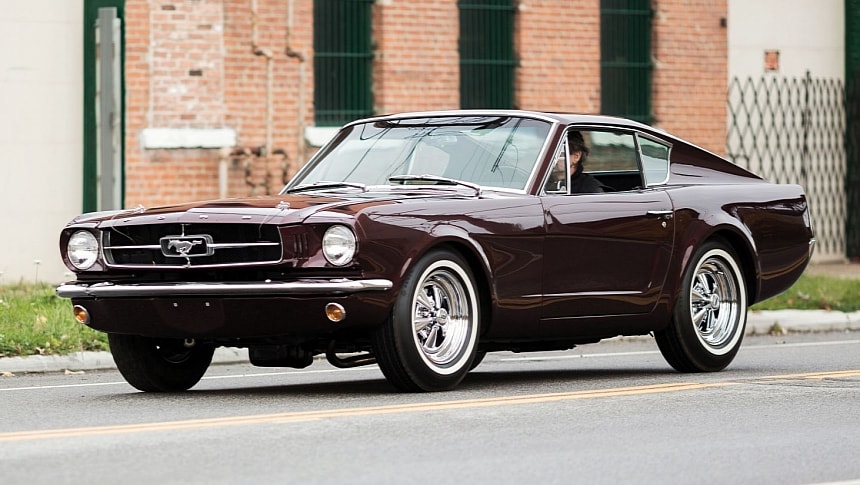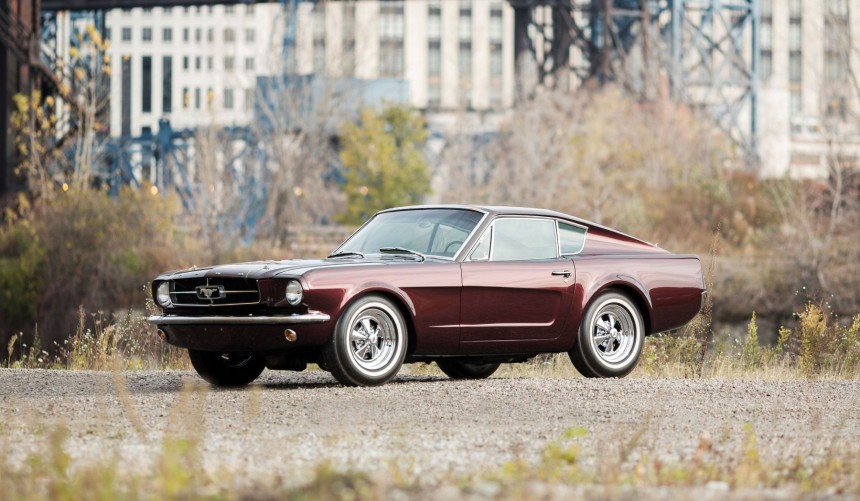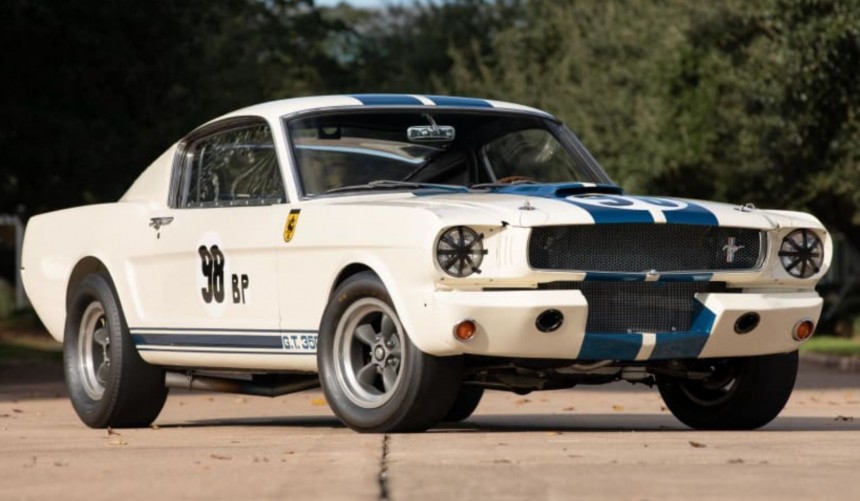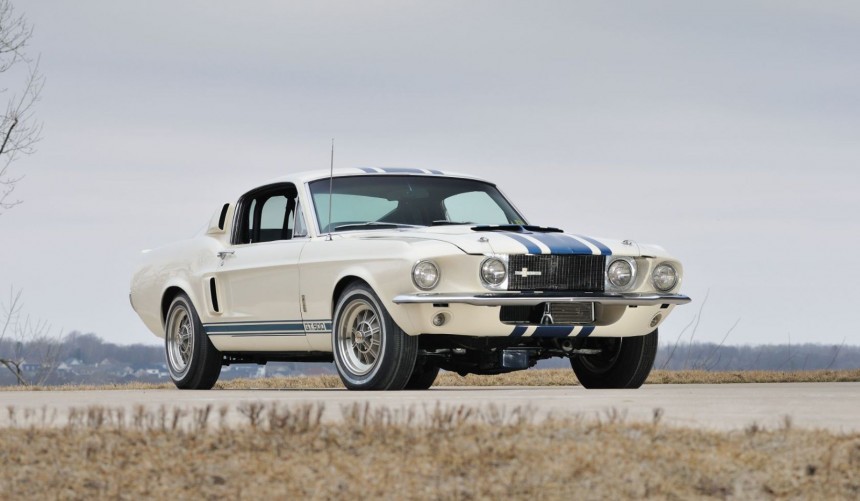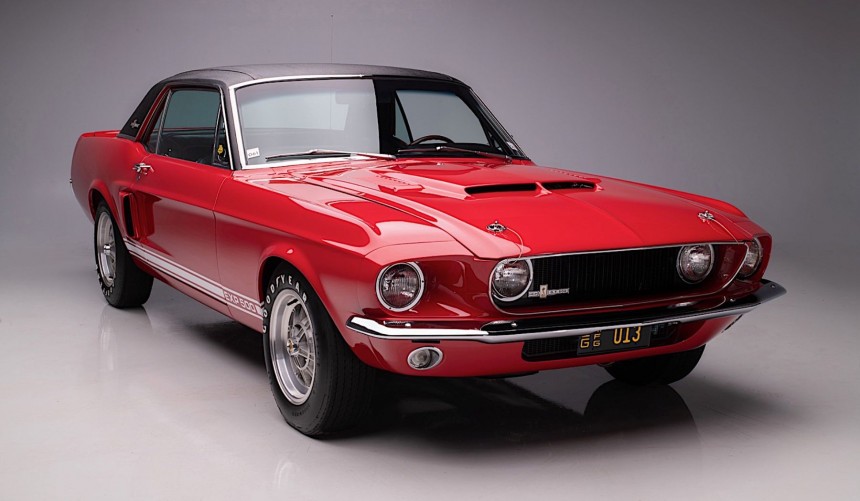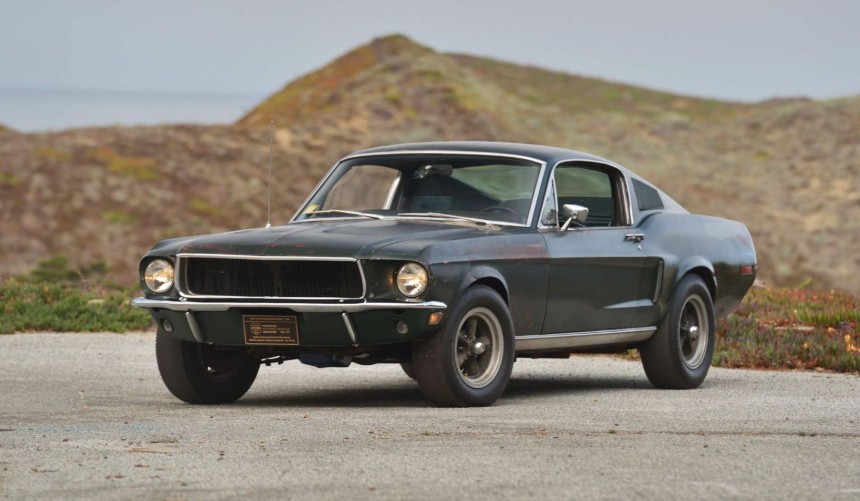Built for nearly a decade, the continually improved first generation of the legendary pony car gave us some memorable Mustangs, and in this article, we're going to remember the five rarest, most intriguing of them all.
Based on Ford's assistant general manager, Lee Iacocca's idea to offer Americans a cheap, youthful, European-style four-seater, the Mustang was developed in only 18 months.
Shortly after its public unveiling at the 1964 New York World's Fair, the model became a sales sensation that exceeded Ford's most optimistic predictions.
For the next nine years, the Mustang was continually improved, and thanks to the multitude of options and versions available, it became the most popular American-built passenger car of its era.
After the first was finally discontinued at the end of the 1973 model year, Ford continued producing the 'Stang for six additional generations and an EV crossover spin-off.
Still, sixty years after its debut, the first generation remains the most popular and sought-after series of the iconic nameplate.
Nevertheless, while most Mustangs developed during the first generation, these five became the rarest and most intriguing.
Initially, the Mustang was available as a coupe or convertible, with a fastback coupe being added several months later.
However, the styling team experimented with several other, more unconventional designs, particularly during the first two years of development.
One of those unconventional designs was a short-wheelbase two-door fastback that actually made it from the sketchpad to a fully functional concept car.
Dubbed Mustang III and nicknamed "Shorty," the two-seat 'Stang was built by Dearborn Steel Tubing (DST) using a conventional preproduction fastback initially built by Ford in 1963.
Powered by a bespoke 302 ci (4.9 liters) - a bored-out version of the production 260 equipped with triple Holley two-barrel carbs - the concept was deemed too unconventional for mass production, so Ford eventually ordered DST to scrap it.
However, the one-off avoided the crusher, and it's still around today, holding the title of the oldest surviving first-generation Mustang.
Though it was introduced as a cheap and sporty car for the masses, the Mustang had to eventually abide by Ford's Total Performance creed.
Therefore, apart from the GT, in 1965, Ford tasked Carroll Shelby and his Venice crew with developing a high-performance version that could make the pony car famous on the road and the race track.
Shelby took several production fastback coupes and proceeded to put them on a lightweight diet. Additionally, they were all equipped with 289-ci (4.7-liter) HiPo K-code V8s beefed up with large Holley four-barrel carb to produce 306 hp.
Dubbed Shelby GT350, the pony-turned-muscle car was built in 562 units. Of those, 34 were specifically tuned for the SCCA's B-production cars.
Codenamed GT350R, these cars featured even more beefed-up, 350-hp K-code V8s and helped the Ford-backed Shelby American team win the B-production class three years in a row.
The very few that survived today are some of the most valuable American cars in the collector's market.
Ken Miles' chassis 5R002 (aka the Flying Mustang) became the most expensive classic muscle car ever sold in 2020 when it fetched $3.85 million at a Mecum auction.
Initially, Carroll Shelby was not a big fan of the Mustang, viewing it as a "secretary's car." But, after his team grabbed the first SCCA title with the GT350 - all while focusing much of their efforts on the GT40 project, he began changing his mind about the pony car.
For the 1967 model year, Shelby was determined to transform the Mustang from a secretary's car to a genuine Euro-style grand tourer, and the GT500 was born.
While the new Mustang-based Shelby model lived up to his expectations, Shelby decided to build an even more impressive version.
Invited to promote Goodyear's new line of Thunderbolt economy tires at a high-speed test facility near San Angelo, Texas, Shelby, who was also the official West Coast distributor for Goodyear tires, ordered his team to squeeze a 500-plus horsepower Le Mans-spec 427 V8 from the GT40 into the GT500's engine bay.
The resulting one-off capable of comfortably reaching 170 mph (273 kph) on skinny Thunderbolts became known as the GT500 Super Snake.
Shelby tried to commence a limited production run, but the proposed sticker price was deemed too high to draw any real interest, so the Super Snake remained a one-off.
Without a doubt, 1967 was a busy year at the Shelby American facility. Apart from the motorsport projects and the Super Snake, the Venice crew also built several experimental GT500s, one of which is one of the most famous remains, "Little Red."
While the 1967 Shelby GT500 was only available as a fastback coupe, the company also toyed with the idea of delivering a convertible and a two-door hardtop.
The latter started life as a 1967-spec Mustang GT coupe, the first-ever to feature a 428-ci (7.0-liter) FE big-block V8 straight off the assembly line.
Once at Shelby's shop in California, the car received a new fully independent rear suspension system, front disc brakes, and all the unique visual upgrades conceived for the conventional, fastback GT500.
Painted Candy Apple Red, which gave it its nickname, and doing its stock black vinyl top, Little Red never made it into production, but it was used as a testbed for many GT500 upgrades.
A year later, it was joined by another experimental coupe nicknamed Green Hornet, and decades later, both cars were presumably lost.
Fortunately, the unique GT500 coupes were tracked down and restored during the 2010s, and today, they are some of the rarest, most intriguing first-generation Mustangs ever built.
The first-generation Mustang was extremely successful for its timeless styling, an unprecedented variety of options, and great starting price, but Ford's marketing efforts were also a big part of the success story.
Apart from the big-bucks campaigns that included awesome TV ads or Shelby's SCCA project that made the model famous on the track, the Mustang was also featured in the 1968 Hollywood blockbuster Bullitt, starring Steve McQueen, where it took part in one of the cinema's most exciting car chase scenes.
Two identical cars were used during production, both of which were Highland Green 1968 GT fastbacks upgraded by famous car builder Max Balchowsky.
Each received reinforced suspensions, minor exterior enhancements, and hot-rodded 390-ci (6.4-liter) V8s.
One of the cars was presumably totaled during the shooting, while the other survived and became one of the most expensive muscle cars ever sold at a public auction in 2020 when it fetched $3.74 million at a Mecum event.
However, the second car was discovered recently in Mexico and is currently undergoing an extensive restoration.
Shortly after its public unveiling at the 1964 New York World's Fair, the model became a sales sensation that exceeded Ford's most optimistic predictions.
For the next nine years, the Mustang was continually improved, and thanks to the multitude of options and versions available, it became the most popular American-built passenger car of its era.
After the first was finally discontinued at the end of the 1973 model year, Ford continued producing the 'Stang for six additional generations and an EV crossover spin-off.
Still, sixty years after its debut, the first generation remains the most popular and sought-after series of the iconic nameplate.
Nevertheless, while most Mustangs developed during the first generation, these five became the rarest and most intriguing.
1964 Ford Mustang III "Shorty"
However, the styling team experimented with several other, more unconventional designs, particularly during the first two years of development.
One of those unconventional designs was a short-wheelbase two-door fastback that actually made it from the sketchpad to a fully functional concept car.
Dubbed Mustang III and nicknamed "Shorty," the two-seat 'Stang was built by Dearborn Steel Tubing (DST) using a conventional preproduction fastback initially built by Ford in 1963.
Powered by a bespoke 302 ci (4.9 liters) - a bored-out version of the production 260 equipped with triple Holley two-barrel carbs - the concept was deemed too unconventional for mass production, so Ford eventually ordered DST to scrap it.
However, the one-off avoided the crusher, and it's still around today, holding the title of the oldest surviving first-generation Mustang.
1965 Shelby GT350R
Therefore, apart from the GT, in 1965, Ford tasked Carroll Shelby and his Venice crew with developing a high-performance version that could make the pony car famous on the road and the race track.
Shelby took several production fastback coupes and proceeded to put them on a lightweight diet. Additionally, they were all equipped with 289-ci (4.7-liter) HiPo K-code V8s beefed up with large Holley four-barrel carb to produce 306 hp.
Dubbed Shelby GT350, the pony-turned-muscle car was built in 562 units. Of those, 34 were specifically tuned for the SCCA's B-production cars.
Codenamed GT350R, these cars featured even more beefed-up, 350-hp K-code V8s and helped the Ford-backed Shelby American team win the B-production class three years in a row.
The very few that survived today are some of the most valuable American cars in the collector's market.
Ken Miles' chassis 5R002 (aka the Flying Mustang) became the most expensive classic muscle car ever sold in 2020 when it fetched $3.85 million at a Mecum auction.
1967 Shelby GT500 Super Snake
For the 1967 model year, Shelby was determined to transform the Mustang from a secretary's car to a genuine Euro-style grand tourer, and the GT500 was born.
While the new Mustang-based Shelby model lived up to his expectations, Shelby decided to build an even more impressive version.
Invited to promote Goodyear's new line of Thunderbolt economy tires at a high-speed test facility near San Angelo, Texas, Shelby, who was also the official West Coast distributor for Goodyear tires, ordered his team to squeeze a 500-plus horsepower Le Mans-spec 427 V8 from the GT40 into the GT500's engine bay.
The resulting one-off capable of comfortably reaching 170 mph (273 kph) on skinny Thunderbolts became known as the GT500 Super Snake.
Shelby tried to commence a limited production run, but the proposed sticker price was deemed too high to draw any real interest, so the Super Snake remained a one-off.
1967 Shelby GT500 Experimental Coupe "Little Red"
While the 1967 Shelby GT500 was only available as a fastback coupe, the company also toyed with the idea of delivering a convertible and a two-door hardtop.
The latter started life as a 1967-spec Mustang GT coupe, the first-ever to feature a 428-ci (7.0-liter) FE big-block V8 straight off the assembly line.
Once at Shelby's shop in California, the car received a new fully independent rear suspension system, front disc brakes, and all the unique visual upgrades conceived for the conventional, fastback GT500.
Painted Candy Apple Red, which gave it its nickname, and doing its stock black vinyl top, Little Red never made it into production, but it was used as a testbed for many GT500 upgrades.
A year later, it was joined by another experimental coupe nicknamed Green Hornet, and decades later, both cars were presumably lost.
Fortunately, the unique GT500 coupes were tracked down and restored during the 2010s, and today, they are some of the rarest, most intriguing first-generation Mustangs ever built.
1968 Ford Mustang Bullitt
Apart from the big-bucks campaigns that included awesome TV ads or Shelby's SCCA project that made the model famous on the track, the Mustang was also featured in the 1968 Hollywood blockbuster Bullitt, starring Steve McQueen, where it took part in one of the cinema's most exciting car chase scenes.
Two identical cars were used during production, both of which were Highland Green 1968 GT fastbacks upgraded by famous car builder Max Balchowsky.
Each received reinforced suspensions, minor exterior enhancements, and hot-rodded 390-ci (6.4-liter) V8s.
One of the cars was presumably totaled during the shooting, while the other survived and became one of the most expensive muscle cars ever sold at a public auction in 2020 when it fetched $3.74 million at a Mecum event.
However, the second car was discovered recently in Mexico and is currently undergoing an extensive restoration.
